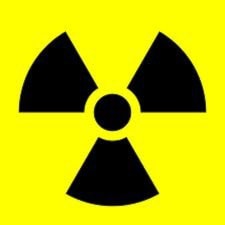Castlegar's mayor and development services director both say the city may advance the issue of a bylaw regarding radon gas mitigation in new home construction, but not until after a Building Officials' Association of BC conference takes place in Kimberley from May 5 - 8.
Zachary May, codes administrator with the Building & Safety Branch, will give a presentation titled “Radon Mitigation and the New BC Building Code” on Tuesday, May 7, which may help guide the direction Castlegar council moves in.
Radon is a proven cancer-causing agent and the odourless, colourless, tasteless, naturally occurring gas is prevalent in the Kootenays.
Castlegar City Council has had numerous visits over the past few years from Dana Schmidt, who established the Donna Schmidt Memorial Lung Cancer Prevention Society after his wife's death from lung cancer in 2009. The society has partnered with the City of Castlegar to provide hundreds of free long-term radon testing units.
Schmidt gave an April 2 review of radon dangers to council, pointing out that Ontario, for about 30 years, has had bylaws requiring radon testing before occupancy permits will be issued.
Phil Markin, Castlegar's development services director , said part of the issue with drafting such a bylaw is it would have no effect if inconsistent with a provincial enactment; in this case, the B.C. Building Code.
Section nine 9 of the Community Charter discusses "spheres of concurrent authority,"which means for bylaws to be enforceable, they must either comply with a minister's regulation; comply with an agreement between the minister and the municipality or be approved by the minister responsible.
The minister responsible for the building codes is Rich Coleman, as the Office of Housing and Construction Standards falls under the responsibility of the Ministry of Energy, Mines and Natural Gas.
Markin said this is not the first time the city has worked on the issue with the B.C. Government.
"The last time we went through this process they came back to us and said, "No, we're not prepared to do so; the new code is going to be dealing with something like that'," said Markin.
He said the previous building code required either the installation of a soil / gas barrier under the slab, or the installation of a sub-floor depressurization system. He acknowledged it is difficult to evaluate radon levels prior to construction.
"The new code now requires the installation of an air barrier system as well as providing for means to depressurize the space between the barrier and the ground," he said. "The onus is on the property owner to test for radon and if it's found to be at high levels, to install this type of system. I can understand where Mr. Schmidt is coming from and we may be going to the ministry with this, but I'll be taking our report to committee and will get direction from them on how they want me to proceed."
According to a January 2013 report from the BC Centre for Disease Control (Environmental Radiation Assessment Program), areas of B.C. known to have elevated radon in homes are: areas east of the Coast Mountains, including the Kootenays, the Okanagan Valley, Northern Interior, North Thompson and Peace River.
Five to 40 per cent of these interior homes may have radon levels in excess of Canada’s national guideline.
Mayor Lawrence Chernoff said he thinks council's goal is to go ahead with the bylaw eventually.
"We see this as a safety thing and we think there's an ability here to do some prevention," said Chernoff by phone on April 5. "Dana [Schmidt] gave a great presentation and knows what this is all about. It makes sense, the statistics are there. It's a high level of radon in the area and here's an opportunity. All we are asking from the provincial government is to give us that opportunity so we can enforce a bylaw here, so it becomes an effective bylaw and not a lame duck bylaw."
